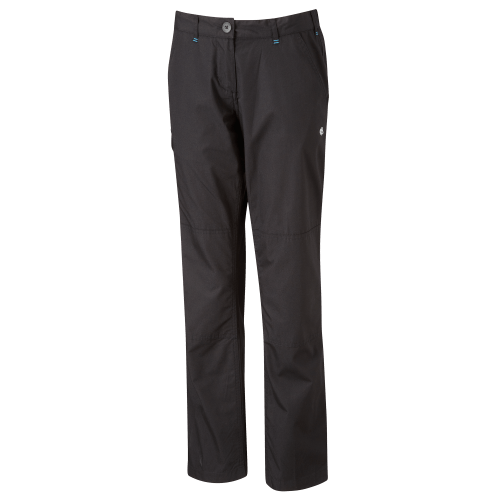What Clothes to Wear for the D of E Expedition
Posted by Gav Grayston.First Published Mar 2015; updated May 2023.
Are you doing a D of E Expedition and unsure what to wear or how to wear it correctly to stay warm? This post will help you get it right.
Do you know any teenagers about to do the D of E Expedition? Make sure they read this so that they keep warm properly.

Our daughter is about to undertake her first Duke of Edinburgh Expedition, and so we've been making sure she has everything on her kit list, and she knows how to use it.
As you can imagine, she's no stranger to the outdoors, and the expedition isn't phasing her. However, we know a lot of others that don't understand how to layer clothes correctly.
We've written about the importance of layering kids clothes correctly before, but this time we look at from the D of E perspective with the kit that they recommend.
This article is in two parts. The first part gives a background on some do's and don'ts with clothes for hiking. The second part goes through the recommended clothing covering why and how you should wear it.
Outdoor clothes are boring! Can't I just wear my jeans?
in the outdoors jeans can kill
The D of E make a point of saying 'No Jeans', not because they want to dictate fashion, it's quite simply in the outdoors jeans can kill.
Yes, that may sound a bit dramatic, but unfortunately, it's true.
If you've ever got your jeans wet or even washed them, you know how long they take to dry. If you were out on a hike and it poured down with rain, you'd be soaked through. And wet clothes means wet skin, and wet skin means you get cold. Very cold. Hypothermia cold.
So it's best to wear the trousers (or type of trousers) recommended by the D of E. These are the Craghoppers Trekker trousers; you can get them for both boys and girls.
Our daughter has been trying the Craghopper Trekker Trousers for months, and they've been a good bit of kit that won't stay damp for long if they get wet.
I don't need all these clothes. I bought the thickest coat possible!
just buying a thick coat is another mistake people commonly make
Unfortunately, just buying a thick coat is another mistake people commonly make.
The D of E recommends lots of items because you wear them in layers.
Add a layer when you are colder and remove it when you get warm.
add an additional layer when you are colder, and remove it when you get warm
It might sound like a lot of needless effort, but the reason you do it is, surprisingly, to avoid overheating.
Yes, overheating.
When you are too warm, you sweat. This can make your clothes damp. And just like damp jeans, damp clothes can make you colder.
So relying on just a big thick coat is not the answer when you're out hiking.
I get cold feet. Should I buy walking boots that are a larger size so I can wear two pairs of socks?
Whilst you should try boots on with walking socks on, as walking socks tend to be slightly thicker than normal socks, it's not recommended that you wear two pairs of socks.
You want your boots to fit well to avoid blisters.
With two pairs of socks, they may not fit so well. Also, your feet could get too hot and sweaty. If you take off one pair of socks, your boots will be too big - which is a sure way to get blisters.
The secret to keeping your feet warm is first to make sure your core is warm
First, the secret to keeping your feet warm is to ensure your core (i.e. your body) is warm.
When you get cold, your body will keep as much of the warmth it can for itself, letting things like your hands and feet to get cold. So the best way to avoid cold feet (and cold hands) is to make sure you've layered your clothes correctly and kept your body warm. Then it will let your hands and feet stay warm.
a base layer for your feet
There's also another solution: a base layer for your feet.
The D of E recommends the Bridgedale Coolmax Sock Liner. These look like a pair of socks but are quite thin, plus they also wick moisture away to help reduce the effect of sweaty feet. These are thermal base layers for your feet, and a much better option than wearing two pairs of walking socks.
Layering for the D of E Expedition
Base Layer

First, you want to start with the base layer. This is the layer closest to your skin and your first layer of insulation to keep your body heat in.
The D of E recommends the Craghoppers Vitalise Base T-Shirt (available for both boys and girls).
Don't think you can get away with a normal T-Shirt instead. Normal T-Shirts are made from cotton, and as we saw earlier, when cotton gets wet, it stays wet.
If you get too warm when wearing a cotton t-shirt, you could become dangerously cold, and adding more layers won't help.
This T-Shirt the D of E Recommends, is made from polyester and will wick away moisture from your body, helping you keep dry if you get too hot. (You should always adjust your clothing if you get too hot, and not just rely on the wicking properties of clothes).
Base layers for other parts of your body

Don't forget the Bridgedale Coolmax Sock Liner we mentioned before if you are doing an expedition when it's cold.
You can also get base layers for your legs too.
If you don't like the idea of polyester, you can get Merino Wool base layers. These are very comfortable, very warm, and are naturally wicking.
Hiking Socks

The hiking socks the D of E recommended are the Bridgedale Woolfusion socks, and it's clear why: these are very good and are well worth the money.
They are warm and also have a slightly padded foot to make them more comfortable when hiking.
They have been designed so that no bits can rub and cause blisters (as you commonly find around the toes on normal socks).
You can also buy Bridgedale Merinofusion socks made from Merino wool. We have some of these and they are really comfy and warm.
Mid-Layer

The D of E recommends the Craghoppers Ionic fleece.
We've been using Craghoppers fleeces like this for years, and we recommend them.
You can zip this fleece around your neck to keep your body heat and the cold air out. Of course, you can unzip it if you start to get too warm.
Trousers

The D of E recommends Craghoppers trousers (so do we, we've got lots of them!). For the D of E Expedition, they recommend the Craghoppers Terrain Trousers.
Our daughter has been using these for hikes for the last few months, and they've stood up well to a lot of activity.
Unlike jeans, they dry out if they get wet.
Coat

The D of E recommends the Craghoppers Reaction Lite Jacket as one of the choices. We also rate this jacket and is one our daughter has been using regularly for the last year. (Click here to read our review)
It's a shell jacket that keeps both the wind and the rain out.
Inside the jacket is a large pocket that's big enough to keep a folder map dry.
This jacket can be folded into a small bundle that you can put in your rucksack if you don't need to wear the jacket.
More Clothes for the Wet
Don't forget waterproof over trousers for when the weather turns bad.
An optional item you may want to get are gaiters. These are especially useful in keeping the rain out of your walking boots. They may not look particularly fashionable, but they can save you a lot of grief. Click here to learn more.
Quick Tips for Keeping Warm
Finally, here are some quick tips to remember to help keep warm.
- Don't wear jeans and cotton.
- Keep your core warm, but not too warm.
- It's often best to remove a layer before activity and then put it back on when you stop.
Links to other useful info
- The D of E Kit List on the D of E Website
-
Tips from Polar explorer Eric Larsen on how to keep warm
- The 10 Commandments for Warm Feet in Winter
